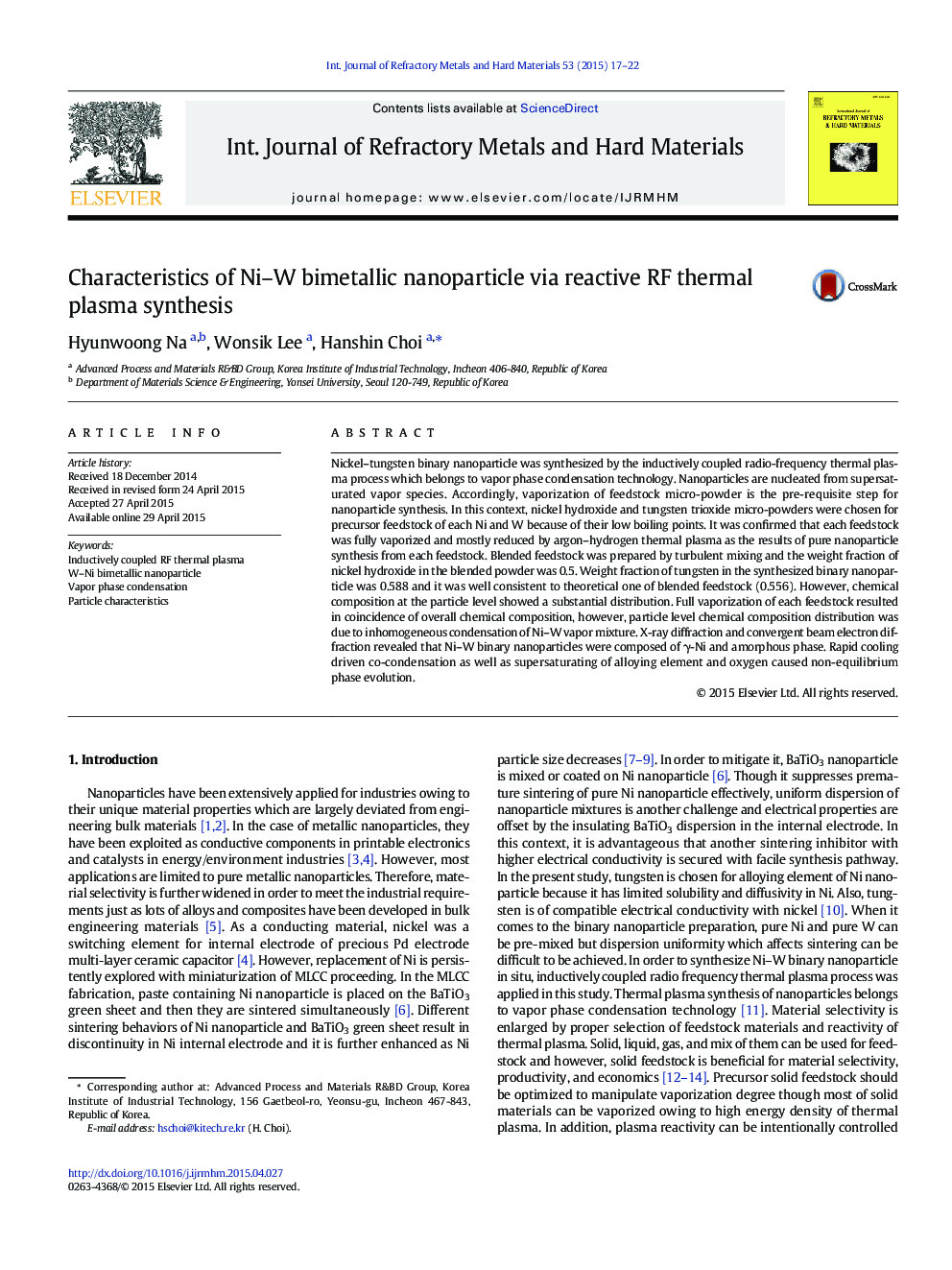| Article ID | Journal | Published Year | Pages | File Type |
|---|---|---|---|---|
| 1602704 | International Journal of Refractory Metals and Hard Materials | 2015 | 6 Pages |
•Ni-W bimetallic nanoparticle was synthesized by RF thermal plasma from Ni(OH)2 and WO3 micro-sized feedstock•By the selected feedstock powder and high energy density reactivity RF plasma, vaporization of each component is reliable•Macroscopic chemical composition is well consistent to theoretical one•Co-condensation of Ni and W results in Ni-W bimetallic NPs but the chemical composition distribution is significant.
Nickel–tungsten binary nanoparticle was synthesized by the inductively coupled radio-frequency thermal plasma process which belongs to vapor phase condensation technology. Nanoparticles are nucleated from supersaturated vapor species. Accordingly, vaporization of feedstock micro-powder is the pre-requisite step for nanoparticle synthesis. In this context, nickel hydroxide and tungsten trioxide micro-powders were chosen for precursor feedstock of each Ni and W because of their low boiling points. It was confirmed that each feedstock was fully vaporized and mostly reduced by argon–hydrogen thermal plasma as the results of pure nanoparticle synthesis from each feedstock. Blended feedstock was prepared by turbulent mixing and the weight fraction of nickel hydroxide in the blended powder was 0.5. Weight fraction of tungsten in the synthesized binary nanoparticle was 0.588 and it was well consistent to theoretical one of blended feedstock (0.556). However, chemical composition at the particle level showed a substantial distribution. Full vaporization of each feedstock resulted in coincidence of overall chemical composition, however, particle level chemical composition distribution was due to inhomogeneous condensation of Ni–W vapor mixture. X-ray diffraction and convergent beam electron diffraction revealed that Ni–W binary nanoparticles were composed of γ-Ni and amorphous phase. Rapid cooling driven co-condensation as well as supersaturating of alloying element and oxygen caused non-equilibrium phase evolution.
